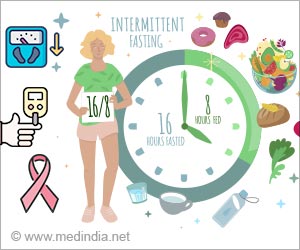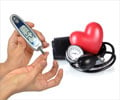DiaBeats algorithm can be used to screen in low-resource settings, as it can quickly predict diabetes and prediabetes with 97% accuracy.
- New machine learning and artificial intelligence (AI) technique can help predict diabetes early
- DiaBeats algorithm can quickly detect diabetes and prediabetes with 97% accuracy
- This algorithm can be used to screen in low-resource settings
How to Diagnose Diabetes Early?
Structural and functional changes in the cardiovascular system occur early on even before indicative blood glucose changes, and these show up on an ECG heart trace.The researchers, therefore, wanted to see if machine learning (AI) algorithms could be used to harness the screening potential of ECG to predict pre-diabetes and type 2 diabetes in people at high risk of the disease.
They drew on participants who were enrolled in the Diabetes in Sindhi Families in Nagpur (DISFIN) study, that was looking at the genetic basis of type 2 diabetes and other metabolic traits in Sindhi families at high risk of the disease in the city of Nagpur, India.
Families with at least one known case of type 2 diabetes and living in Nagpur, which has a high density of Sindhi people, were enrolled in the study.
Participants provided details of their personal and family medical histories, and their normal diet, and underwent a full range of blood tests and clinical assessments. Their average age was 48 years and 61% of them were women.
The prevalence of both type 2 diabetes and pre-diabetes was high: around 30% and 14%, respectively. And the prevalence of insulin resistance was also high—35%---as was the prevalence of other influential coexisting conditions—high blood pressure (51%), obesity (around 40%), and disordered blood fats (36%).
Based on the shape and size of individual heartbeats, the DiaBeats algorithm quickly detected diabetes and prediabetes with an overall accuracy of 97% and a precision of 97%, irrespective of influential factors, such as age, gender, and coexisting metabolic disorders.
Important ECG features consistently matched the known biological triggers underpinning cardiac changes that are typical of diabetes and pre-diabetes.
The researchers acknowledge the study's limitations. Most of the participants in the study were at high risk of diabetes and other metabolic disorders, so unlikely to represent the general population. And DiaBeats was slightly less accurate in those taking prescription medications for diabetes, high blood pressure, high cholesterol and other conditions. Nor were data available for those who became pre-diabetic or diabetic, making it impossible to determine the impact of early screening.
“In theory, our study provides a relatively inexpensive, non-invasive, and accurate alternative [to current diagnostic methods] which can be used as a gatekeeper to effectively detect diabetes and pre-diabetes early in its course.” They conclude and caution .“Nevertheless, adoption of this algorithm into routine practice will need robust validation on external, independent datasets,”
Source-Eurekalert
















